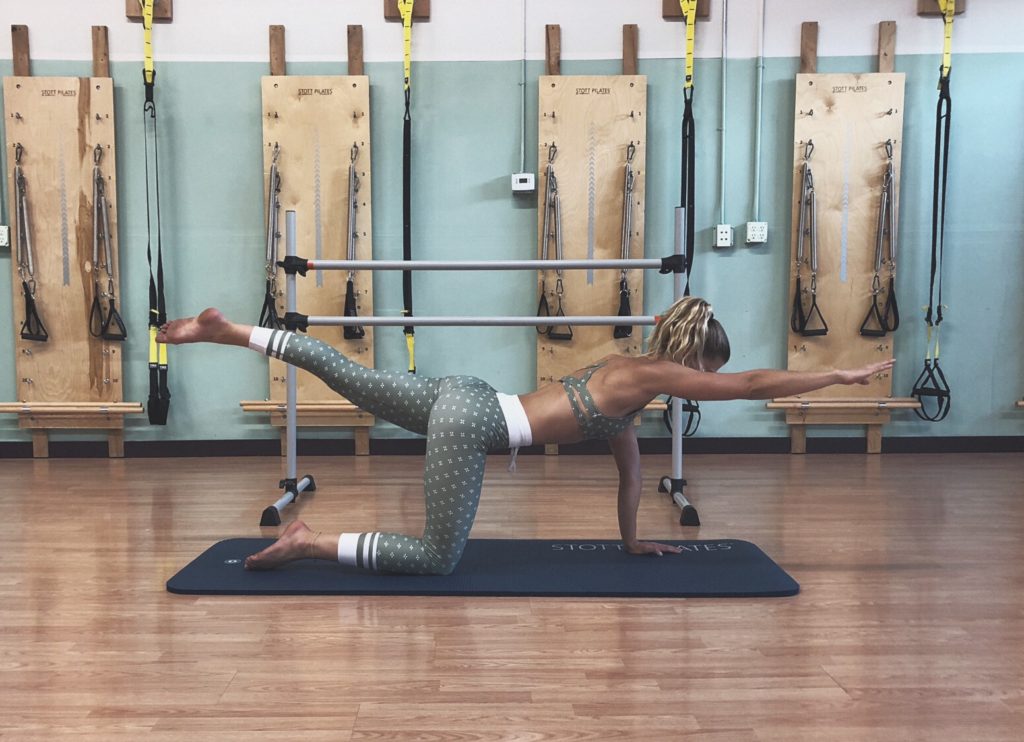A former student in Rob’s kickboxing class at WWU wrote this for her Spring quarter Journalism 207 class.
Mixed Martial Arts and the Body, Mind and Spirit
By Emma Yearous
On the second floor of the newly renovated Carver Gym, sounds of velcro and murmuring students echo off the walls. The static hum emanating from the overhead lights momentarily dominates the space as students catch their breath.
In an abrupt and virtually synchronized manner, students drop their water bottles and rejoin the high-intensity kickboxing drill. Energetic and sometimes aggressive music fills the room. A man drumming wooden sticks together stands amidst the class. He drums faster and faster, augmenting tempo and timing as the drill comes to an end.
The sports equipment manager for the Department of Health and Human Development, Rob Eis, has been at Western Washington University for nearly seven years. Eis said that once you get into martial arts, you start regulating how your body, mind and emotions work together.
“Over the long haul, you recognize there is something damn near magical about the human condition,” Eis said. “There is a driving force in the face of adversity that makes humans achieve and persevere. That is your spirit.”
Eis’s accomplishments and qualifications in martial arts are widespread and seemingly endless. But he doesn’t plaster his 38 years of martial arts experience on his office walls, or come to class dressed in black belts. Instead, Eis earns his students respect in each class by proving he knows what he’s talking about.
Rather than bark orders from the front of the room, Eis prefers a more interactive approach to teaching martial arts by sparring with and working alongside his students.
“I’m just trying to get a bunch of college kids to take a break in their day,” Eis said. “To basically not stress out on anything else, to get totally focused on whatever is going on in class and then once it’s done, return to your day.”
In addition to teaching his students the fundamentals, Eis often tells allegories of the codes of conduct of a martial artist. The moral of one of his favorite stories is that only through struggle, do you cultivate the strength to reach your true destiny.
“I think the struggle is essential,” Eis said. “If I don’t have to work for it, I’m not going to appreciate it.”
Eis’s friend, Tom Weissmuller, served as an attorney, mediator and trial judge until he retired in 2011. Now, Weissmuller runs his own martial arts academy as a senior yoga instructor and lectures on the eightfold path of Zen Buddhism. He fought recreationally and trained for sport fighting to tend to his own mental and emotional well-being.
“You have to find a way to flush out your own mind and stay healthy,” Weissmuller said. “Martial arts was my means of doing that.”
Eis considers Weissmuller to be his most influential mentor. Weissmuller was immediately struck by Eis’s open mind and eagerness to learn untraditional skills, and he exchanged Karate lessons for a latte and two chocolates from Eis.
Eis’s martial arts training was influenced by the teachings of Zen Buddhism and Bushidō. Also known as the way of the warrior, Bushidō is the samurai’s code of conduct; it emphasizes morals such as loyalty, courage, truth, compassion and honor.
“It stresses a duty to family, teachers and mentors, and an appreciation and respect for life,” Eis said.
The martial arts is known for its positive effects on the body, mind and spirit by training the practitioner’s physical, mental, emotional and spiritual health. Eis said that when studying martial arts, it typically hits practitioners first on a surface level, which is physical.
“You start to learn how your body behaves and you become more efficient with your energy,” Eis said. “Or, on the other hand, you don’t make adjustments, wonder why you’re losing all the time, and you quit.”
Next, practitioners begin to study how their mind works. Eis said that students are challenged mentally during focus mitt work. The repetitive drill sequences ingrain discipline, focus and situational awareness.
Eis said martial artists then study how they process emotions. When a student is frustrated, they either throw down their gloves and leave or they stick with it. Eis labels this as an emotional response.
Though Eis doesn’t subscribe to any particular religion, he recognizes the natural relationship between his work and spiritual practices.
“I do find that spiritual practice naturally occurs in the long-term study of martial arts, which is a great thing,” Eis said. “Each individual finds their way and what speaks to them.”
Although he has a multitude of experiences, Eis continues to approach teaching with a beginner’s mindset. He said he is eternally a student at heart.
“I want to stay vibrant and hungry for each new practice; always looking for some small way to improve and grow,” Eis said. “Whether that’s personally or figuring out ways to help each of my students learn better and grow themselves.”
Stacy Halbakken, the support supervisor for PE100-level activity courses, has worked with Eis since 2012. Halbakken values Eis’s teaching skills, work ethic and his compassion for mixed martial arts. She said Eis is dependable, self-motivated, team oriented and organized.
“Every time I observe Rob’s classes, I walk away knowing our students are receiving quality instruction,” Halbakken said. “He has great control of the class, well organized and breaks down movements for students.”
This summer, Eis will be teaching two courses at Western; beginning self-defense and beginning kickboxing.


Emma Yearous, 2019 WWU graduate, BA in accounting.
